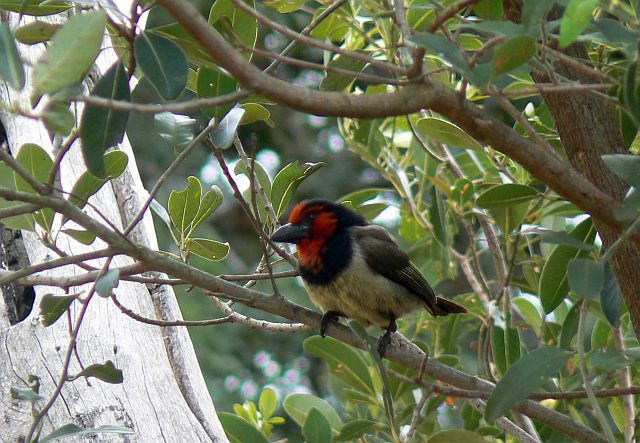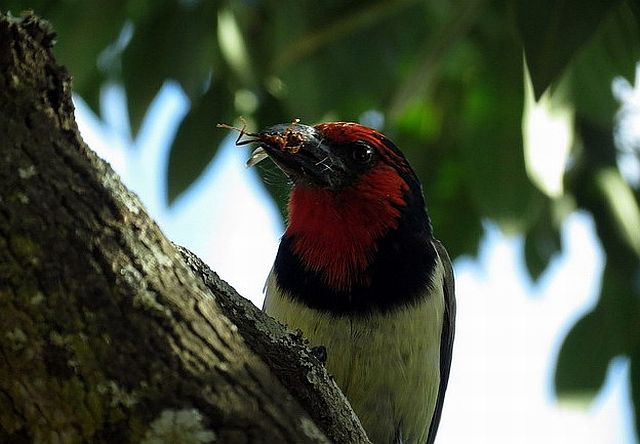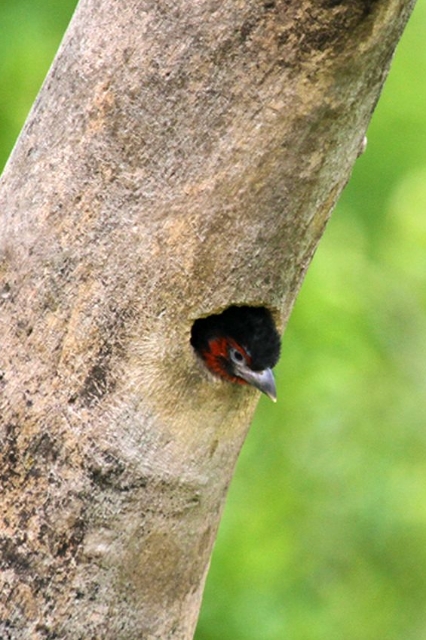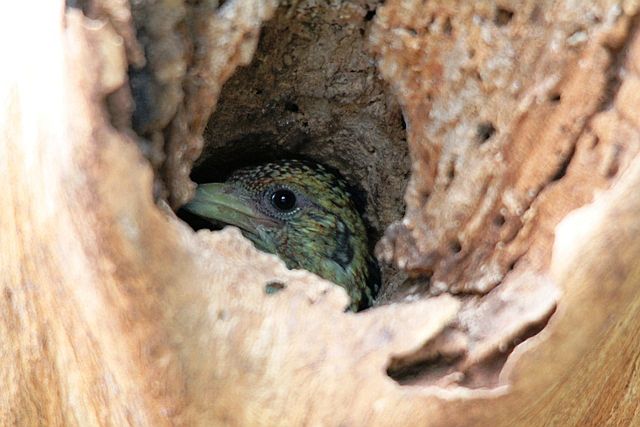Order: Piciformes. Family: Lybiidae
 © BluTuna
© BluTunaMarakele National Park
Description
11.5 cm. Small barbet with golden-yellow or deep orange forecrown, black-and-white streaked upperparts and head-sides, and lemon-yellow underparts. Rump and uppertail-coverts pale yellow. Iris dark brown; bill black; legs and feet brown.
Juvenile has a black forecrown.
Similar species: similar to Redfronted Tinker Barbet, but lacks golden wingpatch.
Distribution
The Yellow-fronted Tinkerbird is widespread in sub-Saharan Africa, largely absent from the DRC. Within southern Africa it occupies north-eastern Namibia (including the Caprivi Strip), northern and south-eastern Botswana, Zimbabwe, Mozambique and north-eastern South Africa.

Habitat
It generally prefers broad-leaved woodland, especially with miombo (Brachystegia) and mistletoes (incl. Tapinthus, Erianthemum, and Viscum), avoiding evergreen forest.
Diet
It feeds mainly on fruit, especially mistletoe fruits, a tree which largely relies on it to disperse seeds. It takes also insects and forages like warbler in vegetation, actively darting at insects and gleaning from foliage.
Breeding
Both sexes excavate the nest, which is usually a hole dug into a dead branch which is at least 10 cm wide. The breeding pair are sometimes displaced by Tricholaema leucomelas (Acacia Pied Barbet), who then enlarge the cavity to use as a nest. Egg-laying season is from July to February, peaking from September to October in Zimbabwe and from October to March in South Africa. The female lays 2-4 white eggs, which are incubated by both sexes. The chicks are cared for by both parents, calling persistently for food.
Call
An unbroken rhythm of tonk-tonk-tonk-tonk-tonk-tonk; also high-pitched musical trill trroo, trroo, trroo; aggressive kss kss.
Status
Common resident.



 © BluTuna
© BluTuna


 © Dewi
© Dewi © Amoli
© Amoli © Hawkeyes
© Hawkeyes © leachy
© leachy © Peter Betts
© Peter Betts © PRWIN
© PRWIN © Amoli
© Amoli © Amoli
© Amoli © pooky
© pooky